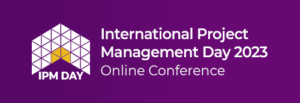By Kim Essendrup and Kate Anderson
September 20, 2023
Organizational change isn’t a possibility – it is a certainty. And as organizations change, so do their goals, strategies, teams – and the projects they deliver. These changes can make you, as project managers, feel like you are on a tiny boat lost at sea, trying to navigate your project through the waves and changing winds.
We’re experienced project leaders—we’ve been through this many times. As co-hosts of the Project Management Happy Hour Podcast, we speak with so many of our audience members who are struggling with the impacts of organizational change in their projects. With this breadth of knowledge, we’d like to share some of the advice and tips that we give to our listeners when this happens to them.
Change is Normal
The first thing to understand is this: chaos is normal. Circumstances change and organizations must change to stay relevant, healthy, and profitable. Rather than fight change, prepare for it, embrace it and use change as an opportunity. Lean into it.
The worst thing you can do is act like a bad driver at a yellow traffic light: close your eyes, step on the gas, and hope you make it through without incident. Instead, approach change with a plan to help you weather uncertainty.
When The Storm Hits
Major organizational changes typically impact projects in two ways:
- Changing landscape of our sponsors, stakeholders, and teams
- Reviewing or challenging in-progress projects and investments against new goals
Organizational changes can mean new stakeholders, new sponsors, and new team members or managers. Any one of these people can greatly impact your project. Take time with each new stakeholder to initiate them to the project – give them an overview and engage to gain their support and buy-in, as if it were a new project. To your new stakeholders, this may be a new project! Be prepared for the fact that new stakeholders may mean changes to the project.
With significant changes, such as mergers, acquisitions, and divestitures, it is also normal for the organization to review existing projects and decide whether or not they should continue. Though it’s uncomfortable to have your project’s existence questioned, this is healthy behavior. It is much worse if the organization pivots and your project turns into a ‘zombie’ that should be dead but isn’t, and just consumes resources that may be better spent on other projects.
Overview Presentation
When the change comes, you need to prepare to communicate your project to new stakeholders or sponsors, and potentially re-justify the project. You need to clearly and succinctly explain what your project is about.
To do this, we recommend creating a Project Overview Presentation. This is a simple slide deck which explains your project – think of it as a pitch deck for your project. Each slide should be short and to the point, and each bullet point should read like a newspaper headline.
Typical slides in an Overview Presentation include:
- Sponsoring Team and Leaders
- Summarize whose project this is, why they support it and what they get out of it
- Project Goals and Measures of Success
- List clear, measurable expected benefits of the project
- Scope and the Problem
- Identify the problem or opportunity being addressed by the project, and how this project scope solves that problem
- Investment
- Describe the investment (financial, resource and otherwise), and the expected returns on that investment, be they hard or soft benefits
- Timeline and Key Milestones
- High level outline of key phases and milestones, with focus on “what’s next”
- Risks
- List only the top risks and how they are being addressed
- Current Project Status
- Concise one-slide status report
- Asks
- Customize for each audience you present to, list the key asks you have for them to support the project and help it move ahead
So, when change comes, be prepared to ‘pitch’ your project with your Overview Presentation and be curious about the change rather than fearful. Whether the organization decides your project should stay the course, take a new heading, or return to port, as the captain of your project it’s your job to navigate your project team through the seas of change.
Kim Essendrup is the CEO and co-founder of RAIDLOG.com, a partner of project management consultancy, The Kolme Group, and co-host of the Project Management Happy Hour podcast. His experience and knowledge come from over 20 years of managing critical project initiatives and delivery teams. Kim also recently published “The Ultimate Guide to RAID Log”. He is a certified Project Management Professional and an Authorized Training Partner instructor for the Project Management Institute.
Kate Anderson is a trusted technology leader with over 16 years leading technology products, projects, and people. Kate and Kim Essendrup have worked across the education, hospitality, advertising, and fintech industries, with a focus on mission critical and overly complex projects and platforms. Kate has been a keynote speaker and trainer for five PMI events in 2023. Kate also co-hosts the Project Management Happy Hour podcast, which has been downloaded over half a million times to a global audience.
Kate and Kim are both presenting at this year’s International Project Management Day! Register here.
Disclaimer: The ideas, views, and opinions expressed in this article are those of the author and do not necessarily reflect the views of International Institute for Learning or any entities they represent.




